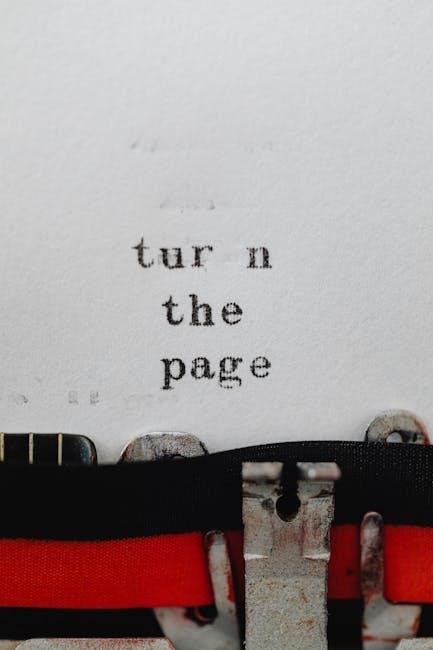
DCT vs. Manual Transmissions: A Comprehensive Comparison
Vehicles today offer a choice between manual and automatic transmissions, with dual-clutch transmissions (DCTs) emerging as a prominent alternative. DCTs blend aspects of both manual and automatic systems, offering faster shifts and enhanced performance. This comparison explores the advantages and disadvantages of DCTs versus manual transmissions, evaluating their performance and driving experience.
What is a Dual-Clutch Transmission (DCT)?

A dual-clutch transmission (DCT), also known as a twin-clutch transmission or double-clutch gearbox, represents a significant advancement in automotive technology. It’s often referred to as a clutchless manual transmission or an automated manual transmission because, unlike traditional automatics that rely on torque converters or CVTs using pulleys, a DCT employs clutch plates akin to a manual transmission. However, the driver doesn’t operate a clutch pedal; instead, the clutches are electronically controlled.
Essentially, a DCT functions as two separate gearboxes housed within a single unit. One clutch manages the even-numbered gears, while the other handles the odd-numbered gears. This unique configuration allows for incredibly rapid gear changes, often faster than even the most skilled manual drivers can achieve. The DCT pre-selects the next gear, enabling seamless transitions without the power interruption associated with traditional manual transmissions. This results in smoother acceleration, improved fuel efficiency, and an enhanced driving experience, particularly in performance-oriented vehicles. The integration of manual and automatic characteristics makes the DCT a unique transmission option.
How DCT Works: Key Components and Operation
The operation of a Dual-Clutch Transmission (DCT) hinges on its core components and their coordinated function. Unlike a manual transmission operated directly by the driver, a DCT relies on an actuation system controlled by the transmission’s electronic control module (ECM). This system manages the shift forks, which engage and disengage gears.
At the heart of the DCT are two independent clutches. One clutch controls the odd-numbered gears (1st, 3rd, 5th, etc.), while the other manages the even-numbered gears (2nd, 4th, 6th, etc.). This dual setup allows the transmission to pre-select the next gear while the current gear is engaged. For example, while the vehicle is in 1st gear, the 2nd gear is already selected but not engaged.
When a gear change is required, one clutch disengages the current gear as the other clutch simultaneously engages the pre-selected gear. This simultaneous action results in exceptionally quick and smooth gear changes, minimizing torque interruption and delivering seamless acceleration. The ECM utilizes sensors and sophisticated algorithms to determine the optimal timing and execution of these shifts, adapting to driving conditions and driver inputs. This intricate process allows for both automated and, in some cases, manual control via paddle shifters.
Advantages of DCT over Manual Transmissions
Dual-Clutch Transmissions (DCTs) offer several key advantages compared to traditional manual transmissions. Foremost among these is the speed of gear changes. DCTs can execute gear shifts in a fraction of a second, often around 1/10th of a second, significantly faster than even the most skilled manual driver. This rapid shifting translates to quicker acceleration and improved overall performance.
Furthermore, DCTs provide smoother torque delivery than manual transmissions. The seamless transitions between gears minimize shift shock, enhancing traction and handling, particularly during spirited driving. This smoothness also contributes to a more refined and comfortable driving experience.
DCTs can also lead to improved fuel efficiency compared to manual transmissions. The optimized shift points and reduced power loss during gear changes contribute to better fuel economy. Additionally, many DCTs offer a manual mode, giving the driver control over gear selection when desired, combining the convenience of an automatic with the engagement of a manual. Ultimately, DCTs combine convenience with performance enhancements for a superior driving experience;
Disadvantages of DCT Compared to Manual Transmissions
Despite their advantages, Dual-Clutch Transmissions (DCTs) also have drawbacks when compared to manual transmissions. A primary concern is the higher initial cost of vehicles equipped with DCTs. The complex design and advanced technology contribute to a more expensive transmission system.
Additionally, DCTs can sometimes exhibit harshness or jerkiness, especially at low speeds or during initial engagement. This can result in a less smooth driving experience compared to a traditional automatic or a well-executed manual transmission. Maintenance costs can also be a disadvantage. DCTs often require specialized fluids and more frequent servicing compared to manuals. Clutch pack replacement, a common maintenance item, can be expensive.
Durability can also be a concern, particularly in high-performance applications or with aggressive driving. DCTs may not be as robust as manual transmissions under extreme conditions. Finally, some drivers miss the direct engagement and control offered by a manual transmission, finding DCTs less involving.
Advantages of Manual Transmissions over DCT
Manual transmissions offer several advantages over Dual-Clutch Transmissions (DCTs), particularly in terms of driver engagement and cost. One of the most significant benefits is the greater sense of control and connection that a manual transmission provides. Drivers have direct command over gear selection, allowing for a more involved and engaging driving experience. Many enthusiasts prefer the tactile feel and precise control offered by a manual gearbox.
Manual transmissions typically have lower initial costs compared to DCTs. Their simpler design and construction make them more affordable to manufacture and purchase. Maintenance costs are also generally lower for manual transmissions. Fewer specialized parts and simpler servicing requirements contribute to reduced long-term expenses.
Furthermore, manual transmissions are often more durable and reliable than DCTs, especially in demanding driving conditions. Their robust design can withstand greater stress and is less prone to failure under harsh usage. Finally, some drivers prefer the simplicity and predictability of a manual transmission, finding it more intuitive and less prone to unexpected behavior.
Disadvantages of Manual Transmissions Compared to DCT
While manual transmissions offer certain advantages, they also have notable drawbacks when compared to Dual-Clutch Transmissions (DCTs). One of the primary disadvantages is the slower gear changes. Manual transmissions require the driver to manually engage the clutch and shift gears, resulting in slower and less smooth transitions compared to the rapid shifts of a DCT. This can impact acceleration and overall performance, especially in competitive driving situations.
Manual transmissions can be more demanding to operate, particularly in heavy traffic or stop-and-go conditions. The constant need to engage the clutch and shift gears can lead to driver fatigue and discomfort. Additionally, manual transmissions require a certain level of skill and coordination, which may be challenging for some drivers to master.
Fuel efficiency can also be a disadvantage for manual transmissions, especially when driven by less experienced drivers. Inconsistent shifting and suboptimal gear selection can lead to increased fuel consumption. DCTs, with their automated and precise gear changes, often offer better fuel economy. Finally, manual transmissions typically do not offer the same level of convenience and ease of use as DCTs, particularly for drivers who prioritize comfort and simplicity.
DCT vs. Manual: Performance and Driving Experience

When comparing Dual-Clutch Transmissions (DCTs) and manual transmissions, performance and the overall driving experience are key considerations. DCTs generally offer quicker acceleration due to their rapid gear changes, often completed in fractions of a second. This results in a more responsive and engaging driving experience, especially in performance-oriented vehicles. The seamless shifts contribute to smoother power delivery and enhanced overall speed.
Manual transmissions, on the other hand, provide a more direct and connected feel. Drivers have greater control over gear selection and engine RPM, allowing for a more involved and engaging driving experience. However, this also requires more skill and coordination. The act of manually shifting gears can be rewarding for experienced drivers who enjoy the tactile feedback and control.
DCTs often include manual modes, allowing drivers to shift gears using paddle shifters or the gear lever. This combines the convenience of an automatic with the control of a manual. Ultimately, the preferred transmission depends on individual preferences and driving style. DCTs excel in speed and efficiency, while manuals offer a more traditional and engaging experience.
DCT vs. Manual: Fuel Efficiency and Emissions

In the realm of fuel efficiency and emissions, both Dual-Clutch Transmissions (DCTs) and manual transmissions present distinct characteristics. DCTs often demonstrate superior fuel economy compared to traditional automatic transmissions, thanks to their rapid and precise gear changes. The ability to quickly shift into the optimal gear helps minimize fuel consumption, particularly during acceleration and cruising. Moreover, some DCTs are designed with more gears, enabling shorter gear ratios and further optimizing fuel efficiency.
Manual transmissions, when driven efficiently, can also achieve commendable fuel economy. Skilled drivers can select the most appropriate gear for the driving conditions, maximizing fuel efficiency. However, the fuel economy of a manual transmission heavily relies on the driver’s expertise and driving habits. Inconsistent shifting or aggressive driving can significantly reduce fuel efficiency.
Regarding emissions, DCTs can contribute to lower emissions due to their efficient operation. The reduced fuel consumption translates to lower emissions of greenhouse gases and other pollutants. Manual transmissions, while generally simpler, may produce slightly higher emissions if not driven optimally. Ultimately, the choice between DCT and manual transmissions in terms of fuel efficiency and emissions depends on a combination of transmission technology and driving practices.
Maintenance and Cost Considerations: DCT vs. Manual
When considering the long-term ownership of a vehicle, maintenance and cost are crucial factors. Manual transmissions generally have lower initial costs compared to Dual-Clutch Transmissions (DCTs). Their simpler design translates to fewer components and less complex manufacturing processes. However, the maintenance costs can vary depending on driving habits and the lifespan of the clutch.
DCTs, with their advanced technology, typically have a higher upfront cost. Their intricate design requires specialized components and more precise engineering. Maintenance can also be more expensive due to the complexity of the transmission system. DCT clutch packs may require replacement around 100,000 miles, adding to the overall cost of ownership.
Furthermore, DCTs may require specialized fluids and diagnostic tools, which can increase maintenance expenses. While manual transmissions may require occasional clutch replacements, DCTs may face more frequent and costly repairs. Ultimately, the long-term cost of ownership depends on factors such as driving conditions, maintenance schedules, and the specific vehicle model. It is essential to weigh the initial cost savings of a manual transmission against the potential maintenance expenses of a DCT.
Which Transmission is Right for You? (DCT or Manual)
Choosing between a Dual-Clutch Transmission (DCT) and a manual transmission depends heavily on individual preferences, driving habits, and priorities. If you prioritize performance, faster acceleration, and seamless gear changes, a DCT might be the better choice. DCTs offer quicker shifts than even the most skilled manual drivers, enhancing the overall driving experience, particularly in sports cars.
However, if you value driver engagement, control, and a more connected feel to the vehicle, a manual transmission could be more appealing. Manual transmissions provide a tactile experience, allowing drivers to fully control gear selection and engine RPM. They also offer a sense of satisfaction and involvement that some drivers find lacking in automatic or DCT systems.
Consider your daily driving conditions. If you frequently encounter heavy traffic or prefer a more relaxed driving experience, a DCT’s automatic mode can alleviate the stress of constant clutch engagement. On the other hand, if you enjoy spirited driving on open roads, a manual transmission offers a more engaging and rewarding experience. Ultimately, the best transmission is the one that best suits your individual needs and driving style.
